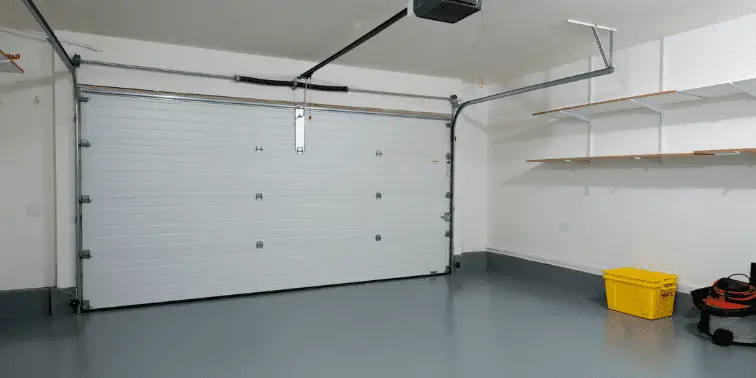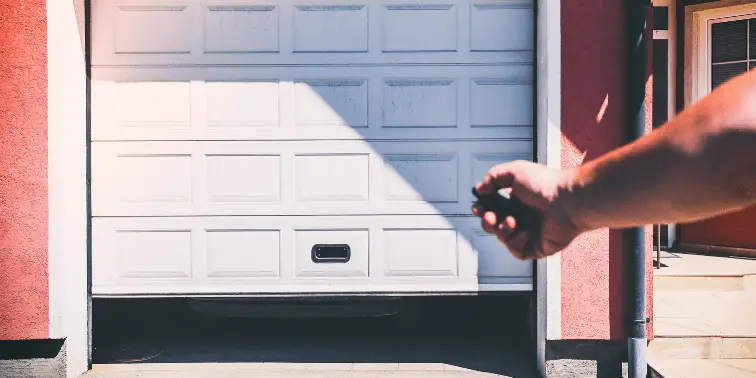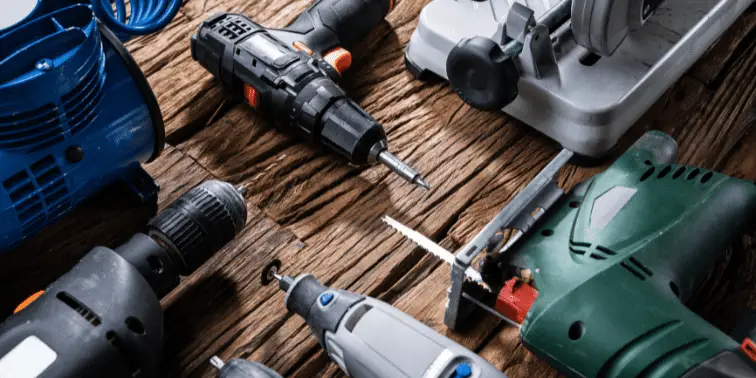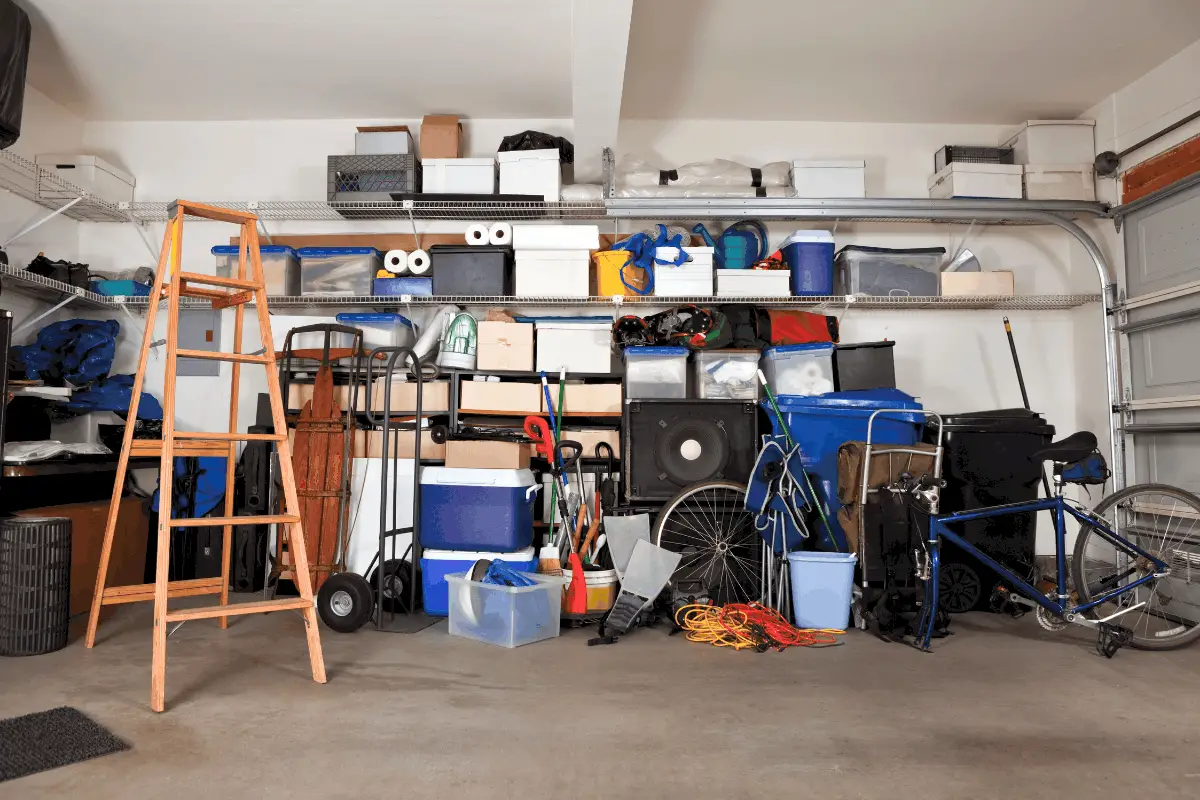Not all homeowners are fortunate enough to have garages. But those who do generally have one of three kinds: converted to living space (which we won’t discuss here) finished or semi-finished, and unfinished. Of course, there are degrees to each of the latter two categories. Still, it is a rare garage that’s cleaner than the inside of the house.
Are you wondering how to pack your garage for moving—preferably without having to clean too much filth, whether from auto fluids, insects and vermin, or just plain dust and dirt accumulated over time? Let us advise you on whether a good wipe-down will do the trick, or you should get out the “big guns” (aka hoses) and block off a day or weekend from your calendar.
You’ll be glad to see the place looking sparkling clean when you’re finished. But, alas, the newly cleaned garage is mainly for your homebuyers to enjoy. But you can proudly load some of the clean items you’re moving into the truck.
Table of Contents
I. Begin with the Garage Itself
Let’s face it; most garages are at least somewhat dirty. It’s because they have that massive opening to the outdoors, plus the water, leaves, and dirt that blow in. So, the first thing to do is move everything, including your car(s), onto the driveway or adjacent lawn. Ideally, they should be near an outdoor faucet for a hose.

Then, when the garage is empty, take a deep breath and decide what you’re dealing with and where to start. Chances are it will be the walls and floor. Walls come first, so all the dirt can be swept, scrubbed, and/or vacuumed at once. You also might want to hose the place down when you’ve finished, being sure to look for leftover dirt, including what’s clinging to shelves.
If you notice you have a lot of junk and trash, consider renting a dumpster.
Where to Put the Garage Content
Remember, you’re cleaning for a move. So decide what you can toss and replace, sell or give away, or want to take to your new home.
- Clean and load the car with what you’re selling or donating. That way, you won’t wind up reclaiming it “just in case.”
- Discard worthless junk or garbage, such as dirty rolls of old insulation, broken lawn and garden tools, or stray hardware. We encourage you to clean and recycle all metals.
- Clean the stuff you want to take with you and leave it either where it is or in a more protected place. Guard it against the elements as appropriate.
When you’re ready to load the moving truck, you don’t want to dig through a dirty garage to decide what to take or toss. Besides, what prospective homeowner wants to buy a home with a yucky garage?
Make Small Repairs as Needed
That reminds us that your garage should not only be clean, but it also should be in good condition. If it needs serious repairs, hire a contractor. But if the repairs are minor, like caulking cracks, sprucing up the paint, or making sure any overhead storage is hung correctly, set aside time for these tasks. Doing so might get you a better offer from a buyer.
Get Rid of Hazardous Materials
cleaning chemicals, motor oil, solvents, and various others. It would be best if you did not leave these in the garage for the new occupants. And any substances deemed hazardous are banned by virtually all moving companies—full-service and truck rental outfits.
What should you do with these problematic items? First, find out if friends or neighbors can use them. If not, find out if there is a toxics collection scheduled in your area. If none is scheduled, contact your municipal government or trash collection provider to find out how to get rid of them safely.
Be Sure to Check the Garage Door

We see garage door maintenance as indirectly related to packing a garage for moving since it’s a crucial part of cleaning and maintaining a garage. Besides, you must have a presentable garage if you want the best offer for your house. So let’s talk about the main garage door.
Most garages have a large one for vehicles and other large items and one or two normal-sized ones for people to use when the large one is closed. The main garage door is important and requires more maintenance than many actually get. That door, whether automatic or hand-operated, has a lot of moving parts.
No matter which type you have, all of these doors need regular lubrication for the moving parts, checks of the tracks and rollers, and replacement of any failing parts. Unfortunately, many of us have found ourselves stuck at home while waiting for a garage door repair person to arrive and dislodge something that’s stuck, replace a bent track, or install an entirely new door.
Of course, an automatic door is more convenient than a hand-operated one. But it also has more mechanical concerns. Do you know that a typical automatic garage door setup has at least ten essential parts? So, for example, what should you do if the hand-held opener stops working? What if the lifting motor suddenly loses power? Or, if you hear an alarming noise?
Our recommendation is to have a garage door professional check and service your main door before you put your home on the market or you or your potential buyer schedules a home inspection.
II. Packing Garage Content for the Move
Once you have thoroughly cleaned and made necessary repairs to your garage and discarded all the junk and garbage, you have a much clearer picture of what you will pack for the move. Before starting, though, check for any items you need to discard. Remember, each piece you put on the truck adds to the moving bill!
Packing Garage Tools for Moving
Some equipment stored in garages presents more significant challenges than others preparing them for a move. this includes the following.

Indoor Power Tools
Many people’s garages double as home workshops. So you might need to clean and pack everything from small hand tools to larger (and more dangerous) power tools). Hand tools are usually easy to pack since most fit into a large toolbox. Power tools are trickier, though.
The following are steps to take when packing power tools, like drills and hand-held saws:
- Remove any attachments, including any rechargeable batteries, and pack them separately.
- Wind any electrical cords around the body of the tool and secure them with tape or cling wrap. Or bundle and fasten them.
- Wrap the tool in worn-out clothing, towels, rags, etc. Encase any fragile or breakable parts in bubble wrap.
- Box the tools with the original packaging if possible. If you no longer have the original box, crumple some packing paper on the bottom of a small but sturdy box, place a tool inside, and add more crumpled paper on top. Make sure there is no room for movement inside.
With large, free-standing power tools like table saws or band saws, the best plan is to use a professional moving or shipping company to pack and safely transport these items for you.
Outdoor Power Tools
This category of power tools comprises anything from a power lawnmower to a string trimmer to a snowblower. These tools differ significantly from the above, depending on the type of tool and the fuel that powers it.
Gas-Powered Tools
Since many outdoor power tools are powered by gasoline, there are some precautions you must take before packing them to move:
- Drain any gas remaining in the tank before moving, using a hand pump to siphon it. Allow the tool to idle while draining any remaining fuel. Moving companies will inspect gas-powered tools to ensure no fuel is left.
- As there may still be combustible fumes lingering in the tank, even after draining it, be sure to remove any spark plugs.
Electric Power Tools
Some outdoor electric power tools use power cords, while others use rechargeable batteries. Either way, electrical tools present their own dangers, just like gas-powered tools. Consider these electrical hazards:
- Risk of shock due to a severed power cord, water contact, a faulty outdoor outlet, etc.
- Risk of tripping on a power cord
- Risk of an acid burn from a leaking battery
- Risk of a battery exploding
- Forgetting to remove a battery before cleaning the machine
Any of these risks could occur because of damage during a move. So you should be 100% confident that all these tools have had damage checks before using them again at your destination.
When packing outdoor power tools, if they have sharp or breakable pieces, use bubble wrap (corrugated cardboard sheets if reinforcement is needed) and wrap the entire item in moving blankets.
Packing or Prepping Miscellaneous Garage Items
Packing or Prepping Miscellaneous Garage Items
The possessions you have stored in your garage—whether because they belong outdoors or there’s no room for them inside—could be anything. Here are some examples of what you might have stored in your garage and that you want to move to your new place:
- Gym Equipment
- Bicycles
- A kayak or canoe
- An ATV
- Home shop equipment
- A refrigerator or freezer
- A portable wading pool
- Yard toys
- Boxed sports paraphernalia
- Automobile accessories
- Winter tires
- Holiday décor
- A compost bin
- Portable enclosures (for pets or toddlers)
We could go on, but you get the picture. You can pack some of these items in boxes and load them on the truck with everything else (provided they are clean). And most, if not all, the larger pieces can still go on the moving truck given the right preparation, such as proper anchoring.
III. How to Pack a Garage for Moving: It’s a Wrap!
Perhaps you’ve been meticulous with garage upkeep all along and had no trouble giving it a going-over before starting to sort through the things you wanted to take with you to your new home. We’ll bet others felt daunted by what lay in front of them, though. Lots of us dread cleaning the garage so much that we procrastinated while the filth gathered.
But now you’re finished. And soon, you’ll be loading (or watching others load) all your belongings onto the moving truck. Be proud of having taken responsibility for the garage—whether by straightening it up year after year or in one “big sweep” after several years. It’s as tidy now as it ever was, and we’re sure its new caretakers will be impressed.
Seeing what you accomplished, they might even feel compelled to keep it clean and well maintained!



